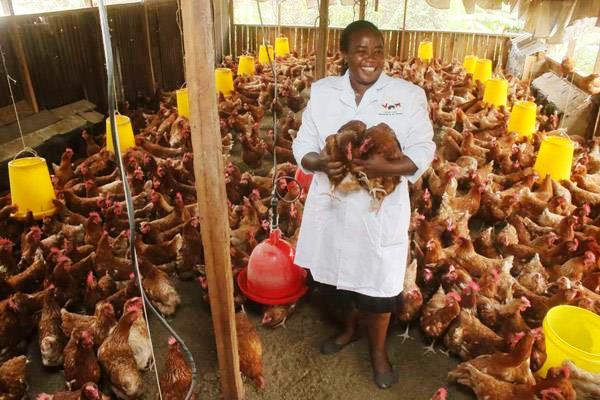Banks are charging higher interest rates to agriculture sector/Courtesy photo
The Bank of Uganda’s Monetary Policy Report for April 2021 has shown that after a sharp decline in lending rates in December 2020 and January 2021 on account of significant loan extensions to some prime customers in the telecoms sub-sector, lending rates rose in February 2021.
“In terms of sectoral distribution, agriculture, services, and building, mortgages, construction and real estate sub-sectors recorded the highest lending rates in February 2021 at 22.9 percent, 22.5 percent and 20.8 percent, respectively,” the report obtained by Business Focus reads in part.
However, in the quarter to February 2021, the banks’ weighted average lending rates on Shillings loans declined to 18.1 percent from 19.6 percent in line with the accommodative monetary policy stance, the report says.
Similarly, it adds, lending rates on foreign currency loans fell to an average of 5.4 percent from 5.8 percent in the previous quarter.
Additionally, the stock of Private Sector Credit (PSC) by supervised financial institutions (SFIs) grew by 9.4 percent in the quarter to February 2021 from 8.0 percent (Figure 6) in the quarter to November 2020 reflecting the gradual recovery in domestic economic activity.
“The growth in total PSC net of revaluation averaged 9.6 percent from 8.0 percent in the quarter to November 2020 reflecting a strong domestic currency,” the report says, adding: “The stock of Uganda Development Bank (UDB) loan rose to Shs. 547 billion as at February 2021 from Shs. 469 billion as at November 2020. UDB lending are largely to agro processing, manufacturing and primary agriculture sub-sectors.”
SFI’s new net lending rose to Shs. 255.5 billion in the quarter to February 2021 up from Shs. 66.9 billion in the quarter to November 2020 reflecting fewer up-take of the credit relief measures (CRMs).
“Indeed, net capitalized interest on account of CRMs fell to Shs. 196.2 billion from Shs. 393.2 billion in the quarter to November 2020. As a result, the growth in the stock of PSC net of capitalized interest averaged 9.2 percent, up from 7.2 percent in the quarter to November 2020,” the report reads.
As at end of February 2021, it adds, the restructured loans under CRMs amounted to Shs. 8.2 trillion, of which Shs. 4.6 trillion remain outstanding, implying that 46.9 percent of loans in the banking sector have benefitted from the CRMs since April 2020.
“The extension of CRMs beyond March 2021 by BoU could moderate risk aversion and consequently support lending in the near-term. A sectoral decomposition of credit growth indicates that credit extensions to the various sub-sectors of the economy were uneven in the quarter to February 2021,” the report says.
It adds that credit extension to the personal and household loans, agriculture and manufacturing rose by 8.2 percent, 6.6 percent and 13.6 percent, up from 7.5 percent, 5.6 percent and 3.1 percent, respectively in the quarter to November 2020.
However, credit growth in the trade, business services, and building, mortgage, construction and real estate sub-sectors declined averaged -4.0 percent, 5.6 percent and 9.1 percent, respectively from -0.1 percent, 8.8 percent and 10.4 percent in the quarter to November 2020, says the report.
BoU says PSC outlook remains on the downside in the short-run due in part to the risk averseness of commercial banks and somewhat low demand.
However, with the opening up of schools and continued vaccination campaigns, credit growth may improve. In the medium term, BoU says, aggregate demand is expected to increase following improved global and domestic economic prospects.
“The outlook for growth in real GDP remains unchanged at 4.0-4.5 percent in FY2021/22,” the report says.
Nonetheless, BoU report says, the recovery is expected to strengthen with above-trend growth in outer years as vaccine effectiveness increases, which should allow for reduced social distancing and a rebound in consumption





